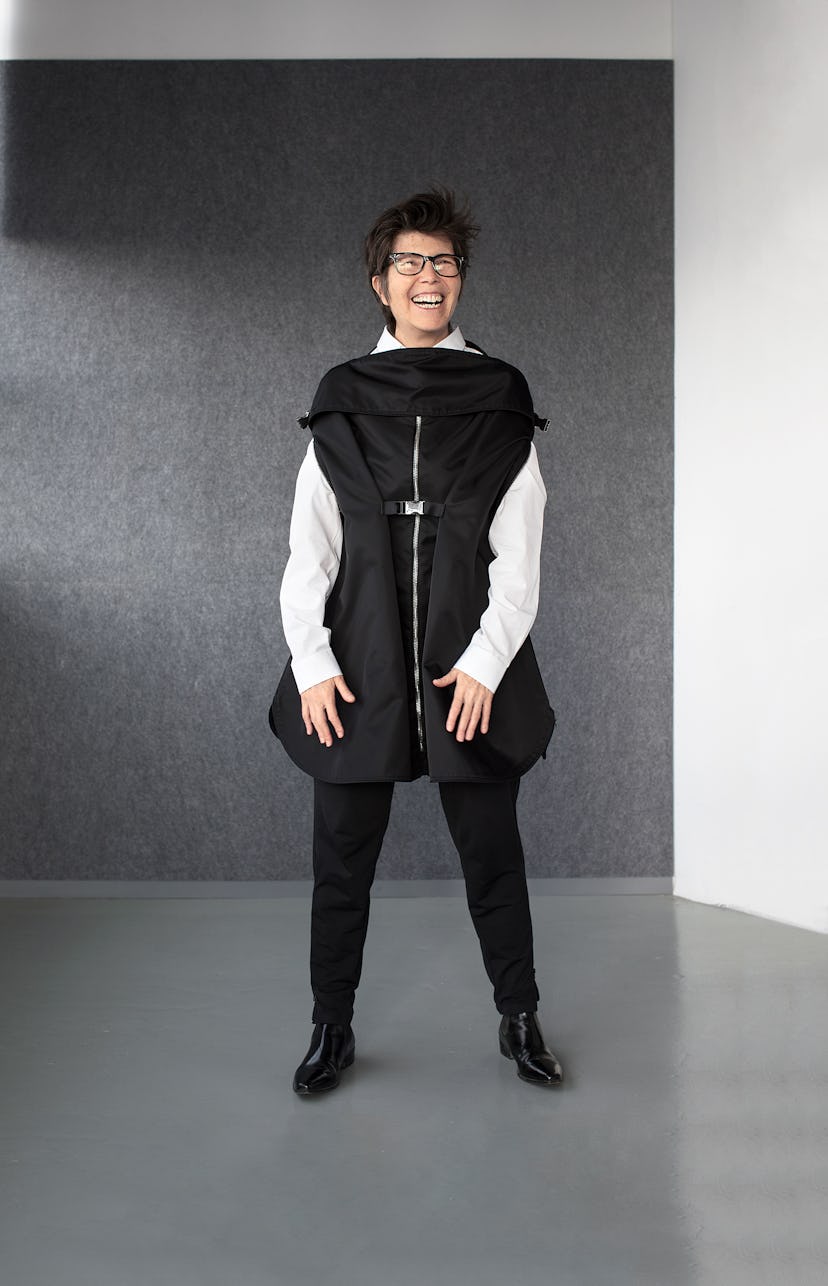How Top Women Architects Elizabeth Diller, Kazuyo Sejima, and Cini Boeri Came to Design Fashion For Prada

Sauntering into a photo shoot at her New York office, a bemused smile on her face, the architect Elizabeth Diller, who last year was named one of Time magazine’s 100 most influential people, is a picture of coolness. That is, until she puts on her eyeglasses for a portrait, only to find that they are totally crooked. The photographer Brigitte Lacombe proclaims them “charming,” but Diller quickly discards them. “I fell asleep with them on,” she explains, laughing. Given the dizzying number of high profile projects that her architecture firm, Diller Scofidio + Renfro, currently has on its plate, that’s understandable. In New York alone, these include the $400 million expansion of the Museum of Modern Art, set to be unveiled this fall; a public art space called the Spur that forms the final section of the High Line; and the $500 million cultural organization the Shed, which opened in April on Manhattan’s far West Side with a roster of programs including a Björk concert. And yet, somehow, Diller found time to design two items for Prada’s spring collection. “I just thought it would be a great opportunity to do another experiment,” she says. “And, also, it’s hard to say no to Miuccia Prada.”
Kazuyo Sejima’s Daln bag.
The two met last summer through their mutual friend the artist Francesco Vezzoli. Following a tour of the Shed, Prada proposed that Diller take part in the latest iteration of Prada Invites, a project in which renowned creatives design limited-edition pieces using the house’s signature nylon fabric. The initial series, launched last February as part of the men’s fall 2018 collection, showcased creations by the designers and architects Ronan & Erwan Bouroullec, Konstantin Grcic, Herzog & de Meuron, and Rem Koolhaas. For this second incarnation, which is presently available at Prada’s New York and L.A. flagships, Diller joins fellow female architects Cini Boeri and Kazuyo Sejima, whose designs are as different as they are visionary. The Italian-born Boeri, who turns 95 this year, is best known for her highly functional furniture. “The basic concept of a project should be that of helping man in every aspect of his life,” she states. For Prada, she offered a messenger-style bag with removable and adjustable elements that is, in her words, “as clean and sober as possible.” Sejima, on the other hand, went wild. The Pritzker Architecture Prize winning Japanese architect, whose firm, SANAA, oversaw the design and construction of the New Museum in New York, created two playful, multifunctional bags: one a stretch of zippered pockets, called Daln, or Long bag; the other a kind of neck pillow, called Yooo, or Curved bag. Both of them are adorned with colorful, amoeba-shaped pouches.
Cini Boeri’s messenger-style bag.
For her part, Diller experimented with the notion of the garment bag—“It’s underthought,” she says—by adding zippers and a belt strap, transforming it into a raincoat, named the Envelope. Additionally, she created the Yoke, a bag that hangs over the wearer’s shoulders and contains pockets for everything from “a cellphone to a sandwich.” With a simple magnetic snap, it contracts into a clutch. “I’m always trying to do more with less and create double meanings,” says Diller, who cites Marcel Duchamp and his readymade approach to art as an important influence on her work. And though she demurs at the suggestion of being a fashionista, Diller plans to wear the modular raincoat to one of her upcoming openings. “I can just see the headlines,” she jokes. “Architect Shows Up in a Garment Bag.”